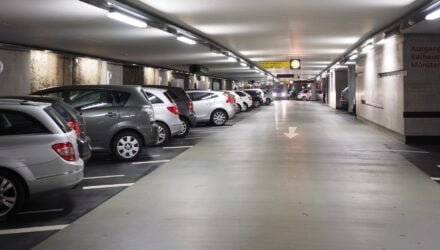Fiat Professional’s New Ducato is the first ever commercial vehicle to benefit from level 2 autonomous Advanced Driver Assistance Systems (ADAS).
 The New Ducato offers a range of technologies aimed at improving the driving experience while making the Ducato a safer environment for work or leisure.
The New Ducato offers a range of technologies aimed at improving the driving experience while making the Ducato a safer environment for work or leisure.
Inclusion of technology like Adaptive Cruise Control with Stop&Go function, Lane Keep Assist and Traffic Jam Assist provides independent assistance while driving and during acceleration and braking. Subsequently, this enables the New Ducato to achieve level 2 autonomous driving.
Additional standout features include speed limitation, braking control for unexpected obstacles such as pedestrians and cyclists, road sign recognition and driver attentiveness monitoring.
 The broader driver assistance and parking system specs are enhanced on New Ducato. The Digital Central Mirror shows a digitally enhanced rear view for the driver. While drivers also benefit from the Electronic Stability Control (ESC) system with Cross-Wind Assist, Trailer Stability Control and Active Park Assist; the latter a semi-autonomous assistant for parallel and perpendicular parking manoeuvres.
The broader driver assistance and parking system specs are enhanced on New Ducato. The Digital Central Mirror shows a digitally enhanced rear view for the driver. While drivers also benefit from the Electronic Stability Control (ESC) system with Cross-Wind Assist, Trailer Stability Control and Active Park Assist; the latter a semi-autonomous assistant for parallel and perpendicular parking manoeuvres.
Additional advanced connectivity features available in the New Ducato include the optional Full Digital Cockpit, combining a 7-inch digital TFT colour touchscreen display and two side digital gauges for RPM and fuel level. A Uconnect 10-inch radio navigation with touchscreen colour display and updated wireless connectivity compatible with Apple CarPlay/Android Auto. In combination with the ADAS technology, the 7-inch central digital display provides clear driver assistance systems information and warning.
The flagship model of the Fiat Professional range, launched in 1981, wears its 40-year history with pride, having already celebrated its status as the best-selling light commercial vehicle in Europe in 2020.
New Ducato offers over 10,000 customisation options to fit any business or leisure needs.
What are the 5 levels of automation?
Level 0: No Automation. The driver is completely responsible for controlling the vehicle, performing tasks like steering, braking, accelerating or slowing down. Level 0 vehicles can have safety features such as backup cameras, blind spot warnings and collision warnings. Even automatic emergency braking, which applies aggressive braking in the event of an imminent collision, is classified as Level 0 because it does not act over a sustained period.
Level 1: Driver Assistance. At this level, the automated systems start to take control of the vehicle in specific situations, but do not fully take over. An example of Level 1 automation is adaptive cruise control, which controls acceleration and braking, typically in highway driving. Depending on the functionality, drivers are able to take their feet off the pedals.
Level 2: Partial Automation. At this level, the vehicle can perform more complex functions that pair steering (lateral control) with acceleration and braking (longitudinal control), thanks to a greater awareness of its surroundings.
Level 2+: Advanced Partial Automation. While Level 2+ is not one of the officially recognized SAE levels, it represents an important category that delivers advanced performance at a price consumers can afford. Level 2+ includes functions where the vehicle systems are essentially driving, but the driver is still required to monitor the vehicle and be ready to step in if needed. (By contrast, Level 3 represents a significant technology leap, as it is the first level at which drivers can disengage from the act of driving — often referred to as “mind off.” At Level 3, the vehicle must be able to safely stop in the event of a failure, requiring much more advanced software and hardware.) Examples of Level 2+ include highway assistance or traffic jam assistance. The ability for drivers to take their hands off the wheel and glance away from the road ahead for a few moments makes for a much more relaxing and enjoyable experience, so there is strong consumer interest.
Level 3: Conditional Automation. At Level 3, drivers can disengage from the act of driving, but only in specific situations. Conditions could be limited to certain vehicle speeds, road types and weather conditions. But because drivers can apply their focus to some other task — such as looking at a phone or newspaper — this is generally considered the initial entry point into autonomous driving. Nevertheless, the driver is expected to take over when the system requests it. For example, features such as traffic jam pilot mean that drivers can sit back and relax while the system handles it all — acceleration, steering and braking. In stop-and-go traffic, the vehicle sends an alert to the driver to regain control when the vehicle gets through the traffic jam and vehicle speed increases. The vehicle must also monitor the driver’s state to ensure that the driver resumes control, and be able to come to a safe stop if the driver does not.
Level 4: High Automation. At this level, the vehicle’s autonomous driving system is fully capable of monitoring the driving environment and handling all driving functions for routine routes and conditions defined within its operational design domain (ODD). The vehicle may alert the driver that it is reaching its operational limits if there is, say, an environmental condition that requires a human in control, such as heavy snow. If the driver does not respond, it will secure the vehicle automatically.
Level 5: Full Automation. Level 5-capable vehicles are fully autonomous. No driver is required behind the wheel at all. In fact, Level 5 vehicles might not even have a steering wheel or gas/brake pedals. Level 5 vehicles could have “smart cabins” so that passengers can issue voice commands to choose a destination or set cabin conditions such as temperature or choice of media.
Source: APTIV






